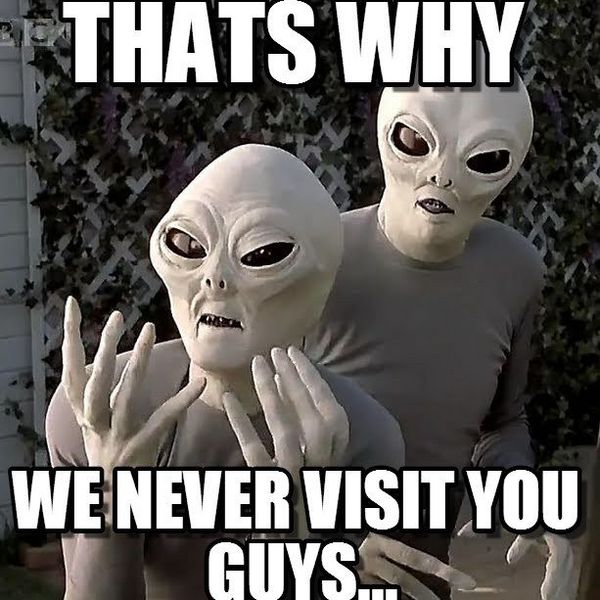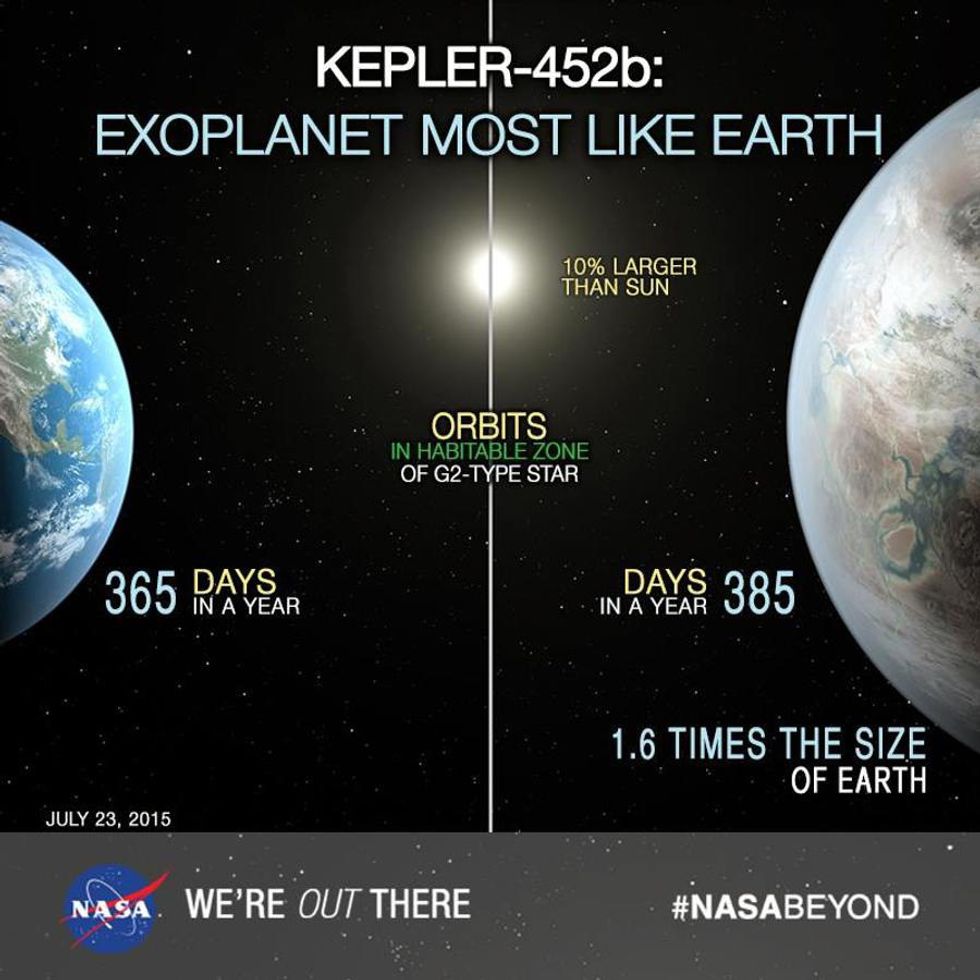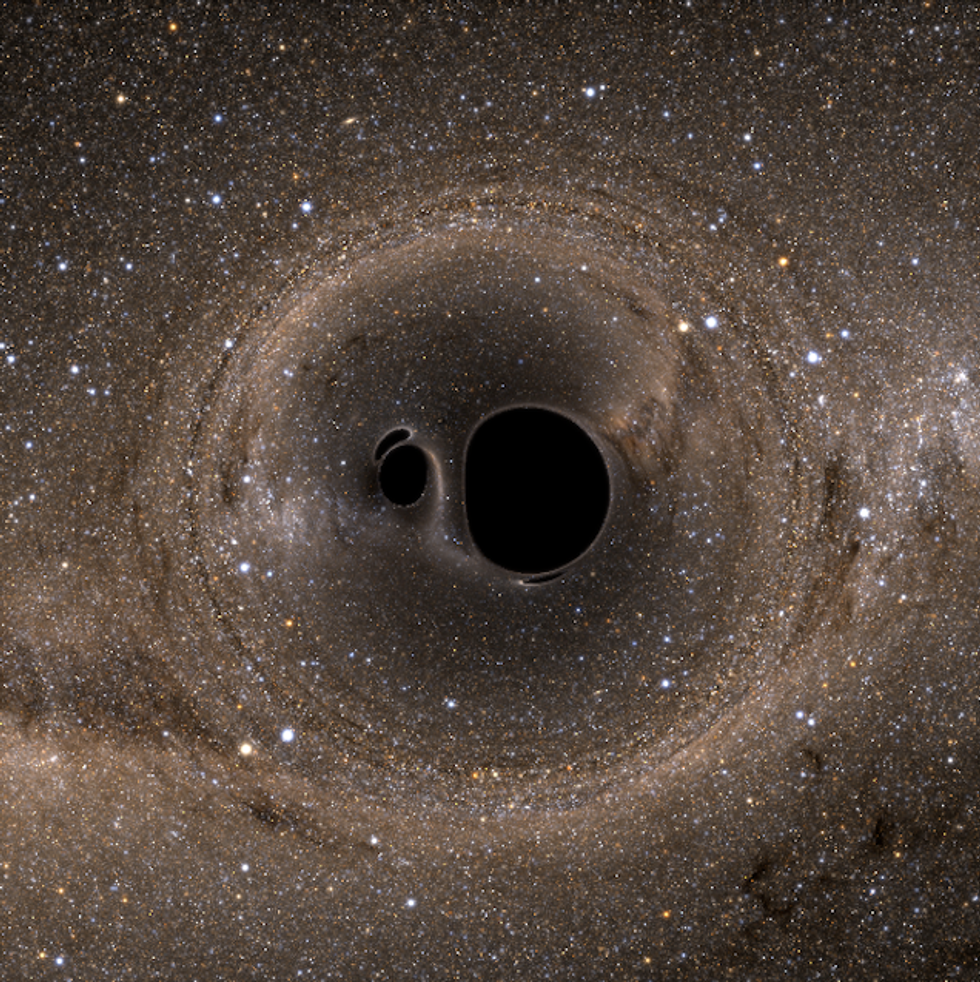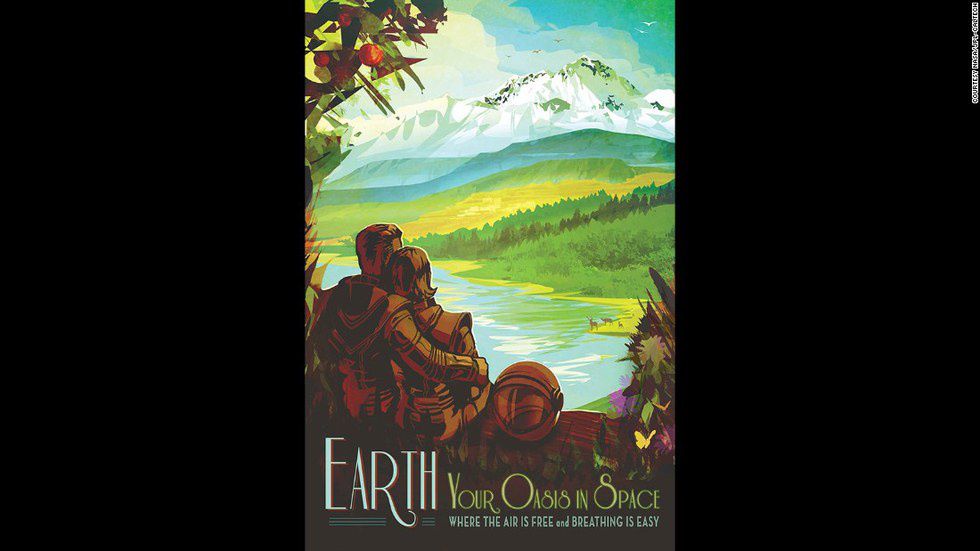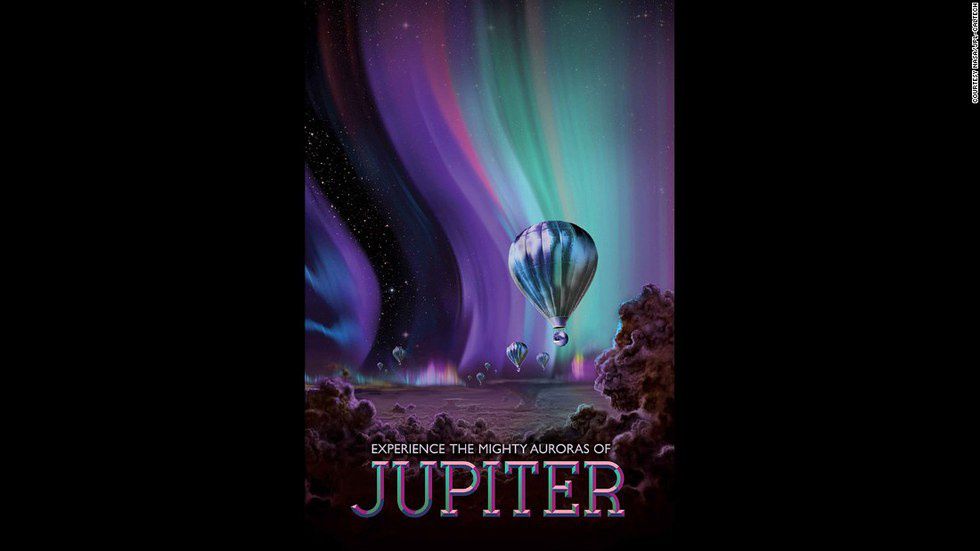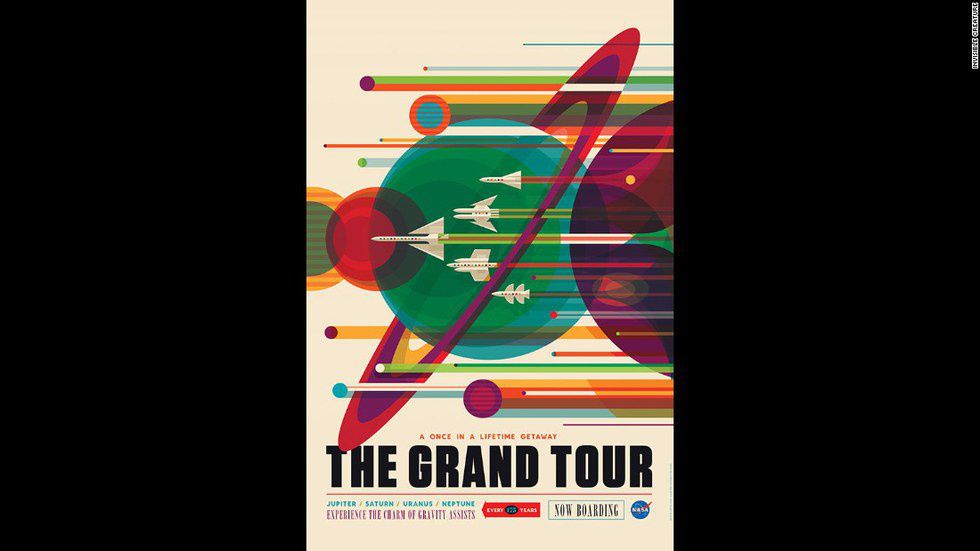It has been an exciting couple of weeks for astronomers and space lovers alike. To the world’s astonishment, a handful of newly discovered planets has been uncovered from the darkness of space. These findings are nothing short of amazing and any new world we find allows even more potential for life to exist outside of the Earth. Coincidentally, just when we found it impossible, this scenario inched closer to becoming a reality when astronomers announced the discovery of a “Second Earth,” Kepler-452b to be exact.
About 1,400 light-years from Earth within the Cygnus constellation lies the Earth’s 1.5 billion-year-old cousin. The far-off Super Earth is about 60% bigger than our own planet but is assumed to resemble the same rocky surface and a similar relationship to its own star as Earth does with the Sun. Its orbit schedule is nearly the same as ours, circling around its star once every 385 days. Within the habitable zone of its star, life could exist on this Super Earth. It will take quite some time to gather more information and know for sure, but the discovery alone is enough to make for some interesting news. Surprisingly enough, as incredible as these new exploits may be, these foreign worlds were not the only cause of all of this commotion.
Out into the universe of the unknown, one of the rarest natural phenomenon occurred and was captured via audio recording. Two black holes collided one billion light-years away from Earth and the sound waves were caught on tape through the nicknamed “cosmic microphones.”
This ground-breaking acquisition of data proved Albert Einstein’s Theory of Relativity. In short, a portion of Einstein’s argument claimed that gravitational waves existed and emanated from objects with any form of gravitational influence to show where and how objects moved throughout space. Sending the scientific world into an over joyous frenzy, this information gave astrophysicists and cosmic enthusiasts an answer to Einstein’s hundred year old proposal. Amongst all of the cheer, NASA came up with their own way to celebrate.
Taking an artistic perspective of recent scientific success, NASA created poster art that encouraged future space travel and how the advertising may appear. The progress science has made in such a short amount of time in our history makes space travel not as unrealistic as it may have once been. To fancy the idea, NASA had some fun. The purpose was clearly for entertainment purposes more than exhibiting a current reality, but what is wrong with being optimistically excited? Creativity never killed the cat after all.
Take a look at some of the most interesting pieces NASA threw together. Pretty cool right?

